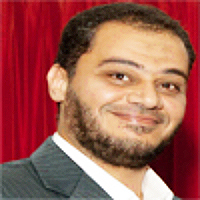The Outcome of Patients with Leukemia Presenting with Hyperleukocytosis Requiring Leukapheresis. The Experience of King Fahad Specialist Hospital in Dammam, Saudi Arabia
Published on: 15th March, 2024
Background: Patients with acute and chronic leukemia presenting with hyperleukocytosis are at risk of developing leukostasis which has serious and life-threatening complications. Leukapheresis is usually performed to reduce the complications of leukostasis in patients presenting with hyperleukocytosis and clinical manifestations compatible with leukostasis. Methods and materials: A retrospective study of patients with acute and chronic leukemia who received leukapheresis for hyperleukocytosis between the 1st of January 2013 and the 31st of December 2023 at King Fahad Specialist Hospital (KFSH) in Dammam, Saudi Arabia was performed. Results: Over a period of 11 years, a total of 50 patients with acute and chronic leukemia presenting with hyperleukocytosis and clinical manifestations of leukostasis; 32 patients with acute leukemia (AL) and 18 patients with chronic myeloid leukemia (CML); received leukapheresis at our institution. Among the 32 patients with AL who received leukapheresis, 24 patients (75%) had acute myeloid leukemia (AML), 7 patients (21.88%) had acute lymphoblastic leukemia (ALL) and 1 patient (3.13%) had bilineage acute leukemia (BAL). At presentation of their AL: 3 patients (9.38%) had fever, 9 patients (28.13%) had infections, 4 patients (12.5%) had palpable spleen or liver, 6 patients (18.75%) had palpable external lymph nodes, and 9 patients (28.13%) had extramedullary disease (EMD). After receiving induction and consolidation cycles of chemotherapy, 11 patients (34.38%) of AL patients received allogeneic hematopoietic stem cell transplantation (HSCT). At the end of the follow-up, 17 patients (53.1%) with AL were alive while 15 patients (46.9%) were dead. The 8-year overall survival (OS) for all patients with AL subjected to leukapheresis was 47%. The 5 years OS for patients with AL who subsequently received HSCT and those who did not receive allogeneic HSCT were 70% and 40% respectively. The mean white blood cell (WBC) count of CML patients subjected to leukapheresis was 465.5 × 109/L, 11 patients (61.11%) had clear signs of leukostasis, and 8 patients (44.44%) had splenomegaly at presentation. Regarding the disease stage at presentation, 14 CML patients (77.78%) had chronic phase (CP), 2 patients (11.11%) had accelerated phase (AP) and 2 patients (11.11%) had blast phase (BP). Regarding the fate of CML patients at the end of the study were: 15 (83.33%) were alive, 1 (5.56%) dead, and 2 (11.11%) were unknown as they lost follow-up. However, the 10-year OS of patients with CML subjected to leukapheresis was 90%. Conclusion: Patients with acute or chronic leukemia presenting with hyperleukocytosis and either ongoing or impending leukostasis should have urgent cytoreductive chemotherapy and leukapheresis to prevent life-threatening complications. Although the outcome of AL patients presenting with leukostasis is generally poor, prompt cytoreductive therapy and leukapheresis, followed by induction chemotherapy and allogeneic HSCT may improve the outcome. Also, urgent cytoreduction including leukapheresis improves the outcome of patients with CML presenting with hyperleukocytosis and leukostasis.
















